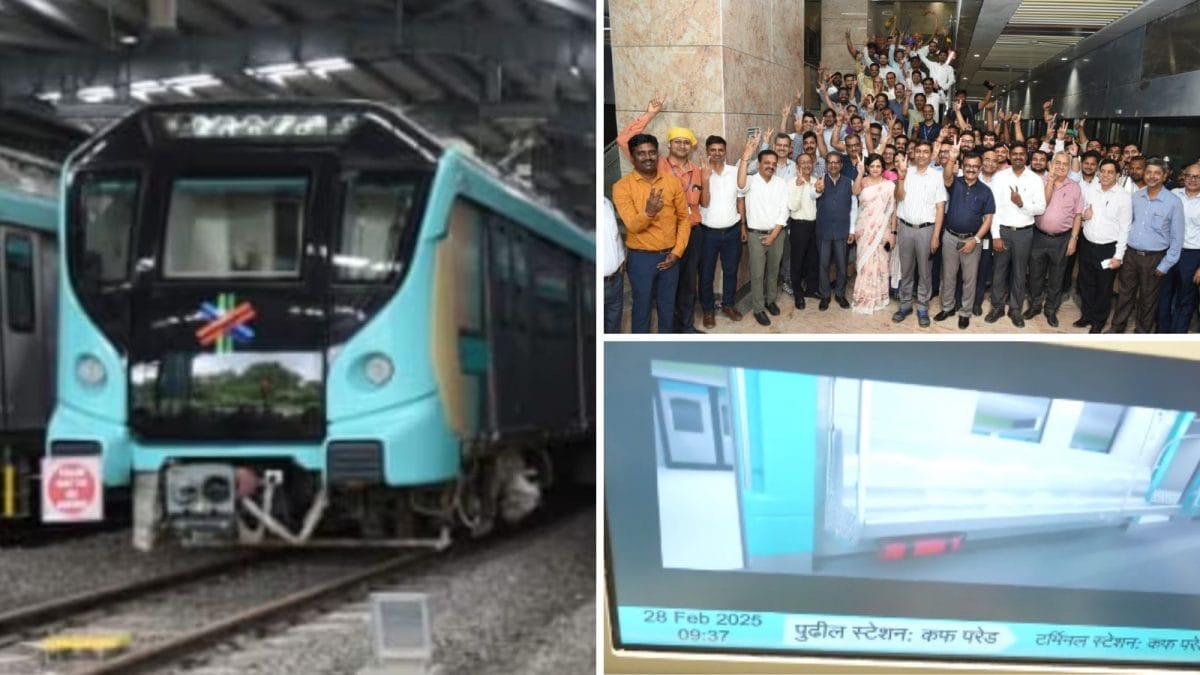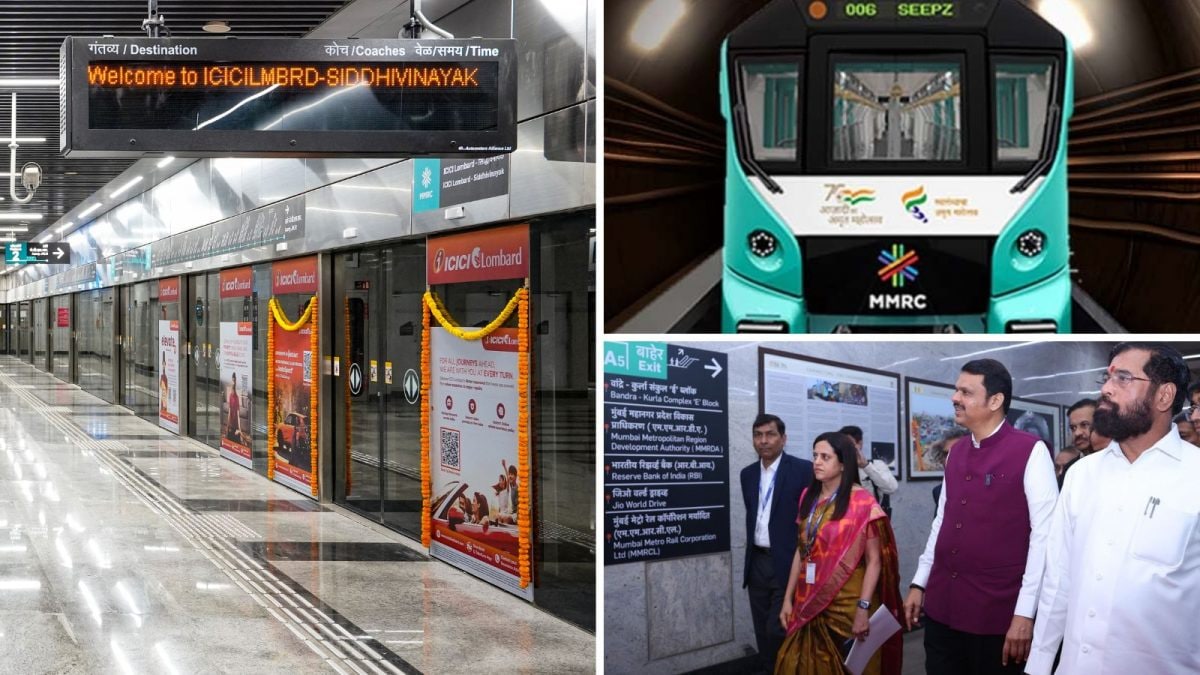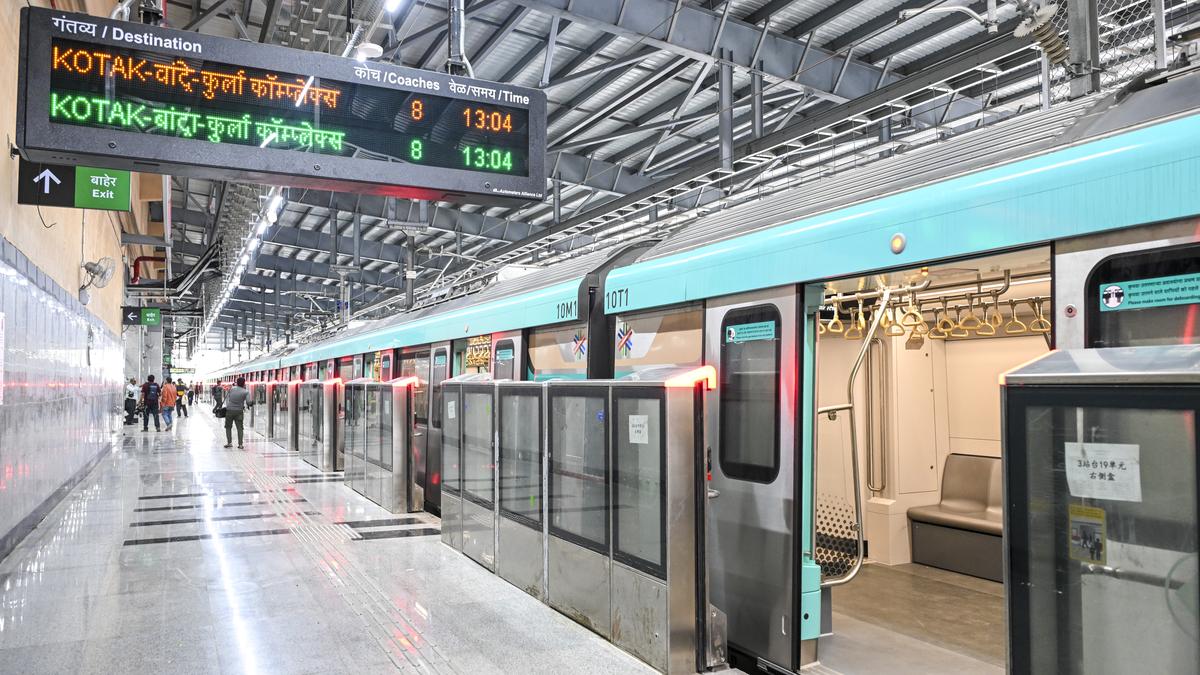- March 2, 2025
Metro-3 Completes Trial Till Cuffe Parade: Set For July Launch, How Aqua Line Will Help Mumbai Commuters – News18

Last Updated:
Mumbai Metro-3 Aqua Line: The MMRC, in a release, said it had achieved a “historic milestone” with this trial, adding that it demonstrated the readiness of key infrastructure elements, including rolling stock, tracks, and civil works
The MMRC team (top right) celebrates the Metro-3 (left) milestone; the indicator flashing ‘Cuffe Parade’ as the approaching station. (X)
The Mumbai Metro Rail Corporation Limited (MMRCL) on Friday achieved a significant milestone towards completion of the city’s first underground corridor, as a trial train reached Cuffe Parade station, the last point of the 33.5-km Metro-3, also known as the aqua line.
The MMRC, in a release, said it had achieved a “historic milestone” with this trial, adding that it demonstrated the readiness of key infrastructure elements, including rolling stock, tracks, and civil works.
“The arrival of train trial at Cuffe Parade, covering a 10.99 km stretch from Acharya Atrey Chowk to Cuffe Parade, marks a crucial step toward the commissioning of Phase 2B,” the release stated.
ALSO READ | Mumbai Metro-3 Running, But How To Reach BKC From Borivali West? Here’s A 3-Step Guide On Route & Fares
MMRC managing director Ashwini Bhide said, “Train trials for Phase 2A from Dharavi to Acharya Atrey Chowk are in full swing, and simultaneously, we have successfully initiated train movement from Acharya Atrey Chowk to Cuffe Parade. We are committed to commissioning the entire line by July 2025.”
🎊???????????????? ???????????????????????????????? ???????????????????????????? ???????????????????????????????????? 🎊The most awaited trial train reached its final destination at #CuffeParade covering a 10.99 km stretch from #AcharyaAtreChowk. The significant milestone marks a step towards commssioning of Phase 2B from Acharya… pic.twitter.com/ntKsivIv5t
— MumbaiMetro3 (@MumbaiMetro3) February 28, 2025
THE PHASES
As Mumbai’s first entirely underground Metro line, the project is a monumental engineering achievement. Once operational, it will significantly transform the city’s public transportation system, easing traffic congestion and cutting down travel time across the metropolitan region:
- Aarey Colony to Bandra-Kurla Complex (BKC): The 12.69-km phase one of the Mumbai Metro-3 aqua line was thrown open to the public on October 7, 2024. The stations on phase one include BKC, Bandra Colony, Santacruz, Chhatrapati Shivaji Maharaj International Airport (CSMIA) T1, Sahar Road, CSMIA T 2, Marol Naka, Andheri, SEEPZ and Aarey Colony JVLR (the only station at grade).
- BKC to Worli: The phase two will have the following stations — Dharavi, Shitaladevi Temple, Dadar, Siddhivinayak Temple, Worli and Acharya Atre Chowk.
- Worli to Cuffe Parade: The phase three will have the following stations — Science Museum, Mahalaxmi, Mumbai Central, Grant Road, Girgaon, Kalbadevi, CSMT, Hutatma Chowk, Churchgate, Vidhan Bhavan, Cuffe Parade
🚇 मुंबई मेट्रो-३ ची ऐतिहासिक वाटचाल!मुंबईच्या पहिल्या भुयारी मेट्रोने आज महत्त्वपूर्ण टप्पा गाठला. ॲक्वा लाईन म्हणजेच मेट्रो-३ ची ट्रेन कफ परेड स्थानकात यशस्वीरीत्या दाखल झाली 🚆
▪️ आचार्य अत्रे चौक ते कफ परेड टप्प्यातील मोठी प्रगती▪️ जुलै २०२५ पर्यंत संपूर्ण ॲक्वा लाईन… pic.twitter.com/1GhL3AHFxU
— MumbaiMetro3 (@MumbaiMetro3) February 28, 2025
HOW IT WILL HELP
When fully operational, the entire Metro-3 line will connect key areas of Mumbai through 27 stations, of which 26 will be underground.
Trains are expected to run at intervals of just 4 minutes and 24 seconds during peak hours, ensuring that the Metro system offers a rapid and efficient mode of transportation for Mumbai’s bustling population.
It will drastically improve connectivity to major commercial hubs such as Nariman Point, Bandra-Kurla Complex and SEEPZ, making it easier for commuters to travel across the city.
The Metro is projected to serve approximately 1.3 million passengers daily, offering a much-needed alternative to the city’s overcrowded roadways and suburban rail network.
The introduction of this Metro line is expected to reduce overall road traffic by 35%, easing congestion and reducing travel time for both public transport users and motorists.








